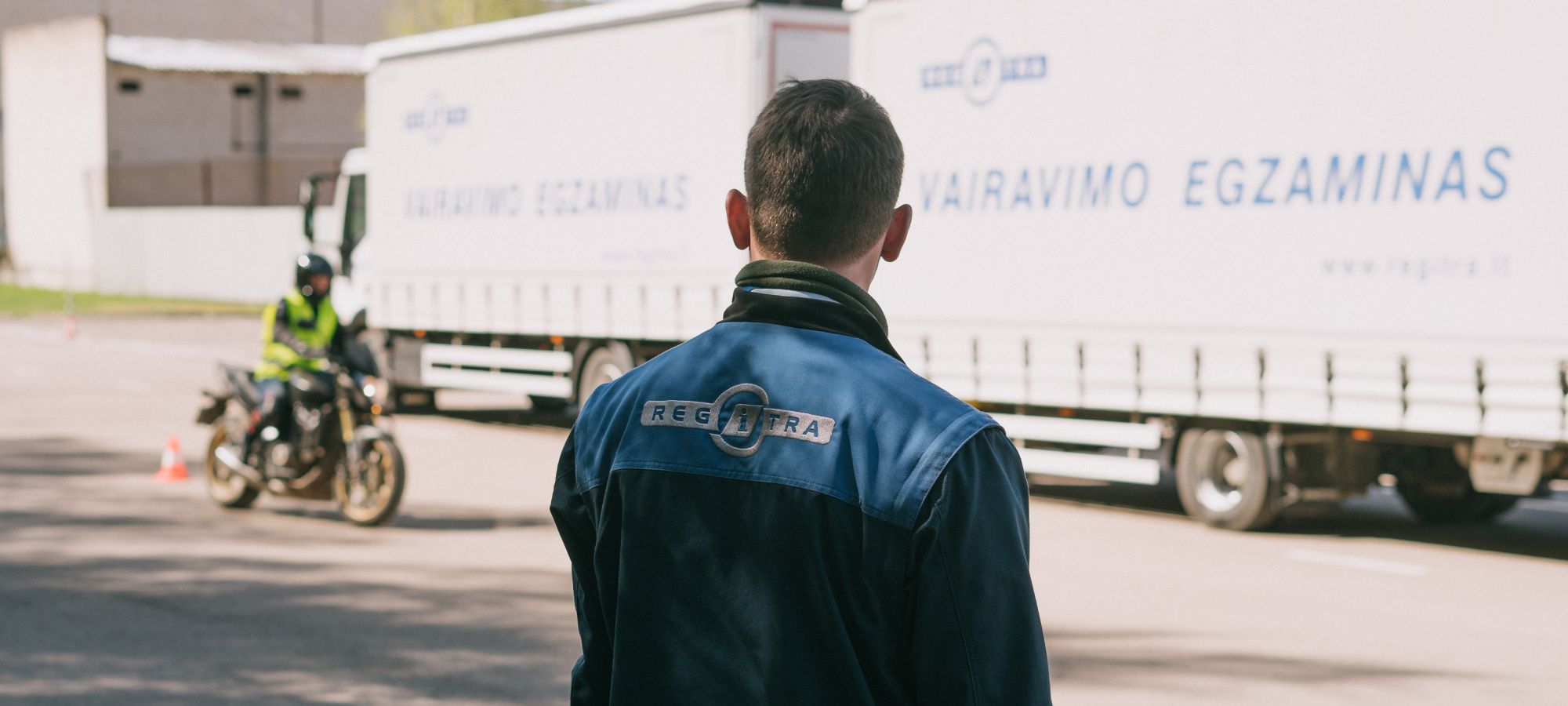
Practical tests of categories A1, A2 and A are organised depending on the weather conditions.
During the test, we ask the examinees to take care additionally of:
During the test, the examinee needs to have the following special clothing:
IMPORTANT. You will not be able to take the test without proper protection.
Appropriate clothing is that is designed to protect a motorcyclist riding on the asphalt or concrete coating:
Examples of inappropriate clothing:
Practical test consists of two parts:
In the driving lot, the examinee is tested for ability to:
Drivers seeking vehicle categories A1, A2 and A, may take the practical test not only using the vehicles of "Regitra", but also their own vehicle, which must meet special requirements:
| A1 | A2 | A | |
|---|---|---|---|
| Internal combustion engine capacity | at least 115 cm3 and not exceeding 125 cm3 | at least 245 cm3 | at least 595 cm3 |
| Rated power | not exceeding 11 kW (15 HP) | at least 20 kW, but not exceeding 35 kW | at least 50 kW |
| Power to mass ratio | not exceeding 0,1 kW/kg | not exceeding 0,2 kW/kg | – |
| Additional information | develops a speed of at least 90 km/h | – | unladen mass not less than 175 kg |
| Electric motorcycle | power to mass ratio must be at least 0,08 kW/kg | power to mass ratio must be at least 0,15 kW/kg | power to mass ratio must be at least 0,25 kW/kg |